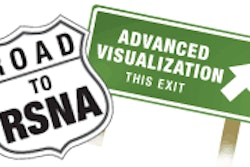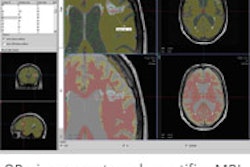New computer-aided detection (CAD) features integrated into the company's 3D software will be a highlight for TeraRecon. The San Mateo, CA, company will also show other new enhancements to its flagship Aquarius 3D software, as well as recent hardware developments.

AquariusCAD Server is a new off-line image processing server for CAD and other advanced visualization algorithms. The first algorithm to be available on the server is a CAD application for CT lung-nodule detection that TeraRecon developed in collaboration with CAD firm iCAD of Nashua, NH. The company is planning to start a clinical trial shortly in support of a premarket approval (PMA) application for the product, with commercial availability expected some time in 2005.
New features will be demonstrated for AquariusNET Server 1.5, including bone removal, enhanced vessel analysis, perspective 3D, and physician consulting between clients. AquariusNET uses a server-based architecture, in which a single server is shared across an enterprise and provides advanced applications like 3D reconstructions, MIPs, and MPRs to PACS workstations and PCs in the facility.
For Aquarius Workstation 3.4, new software features will include segmentation of coronary vessels, region growing, fly-through, enhanced reporting workflow, and an on-the-fly stenosis calculator. The software will also include improved procedural workflow tools and volumetric support for images acquired from 64-slice CT scanners.
For TeraRecon's OEM customers, the company will offer up new software features for its VolumePro 1000D single-board special-purpose 3D/4D computer. Meanwhile, the company is offering a new hardware upgrade for its XTrillion reconstruction boards for CT scanners, C-arms, and radiation therapy systems.
Also on the hardware side, TeraRecon will demonstrate new features for its CBR-2000 3D conebeam CT scanner, which is used primarily for micro CT, small-animal imaging, and biological forensic analysis.
The company is also introducing a new handheld mini gamma camera, called MG 500. The camera is based on cadmium telluride solid-state digital technology and offers direct imaging for intraoperative or preoperative localization of sentinel and other lymph nodes. MG 500 has received FDA clearance, and commercial availability will begin following the RSNA meeting.
By Brian Casey
AuntMinnie.com staff writer
November 18, 2004
Copyright © 2004 AuntMinnie.com



















